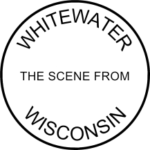 It’s expensive to survey opinion, scientifically, using standard statistical principles. Whitewater, like many small places, understandably relies on community surveys (for the city proper, for her school district). Surveys of this kind are an approximation of overall sentiment. One wouldn’t expect an end to these surveys, but they have obvious, significant limitations. (This is true of online surveys either through Google Docs, SurveyMonkey.com, or POLCO.)
It’s expensive to survey opinion, scientifically, using standard statistical principles. Whitewater, like many small places, understandably relies on community surveys (for the city proper, for her school district). Surveys of this kind are an approximation of overall sentiment. One wouldn’t expect an end to these surveys, but they have obvious, significant limitations. (This is true of online surveys either through Google Docs, SurveyMonkey.com, or POLCO.)
A few remarks:
- Whitewater’s survey samples are often small.
- These responses are from self-selected respondents.
- Some of these small numbers are residents of neither the city nor the school district.
- In Whitewater, the majority of the city’s residents (57.5%) are aged 15-24, while most of the ‘community’ responses to surveys come from the much smaller percentage of respondents (only 16.1% of the city) who are 35-59. Indeed, all residents over 35 amount to only about 27% of the city.
- Just about every press release, news story, and announcement speaks in the language of ‘the community,’ but a majority of this community’s residents are only a minority of those survey respondents.
- Even among all residents 25 and older, Whitewater has a same-ten-people problem.
- This leaves Whitewater’s public institutions mostly populated with a demographic minority of a minority.
- It’s possible to govern this way, of course, as Whitewater has been. It’s evidently hard, however, for those representing a smaller, revanchist view as though it were all the community’s opinion to accept that they’ve actually a minority position.
- More work should be done surveying in places that the city’s majority frequents.
- Nostalgia’s not sound public policy.
